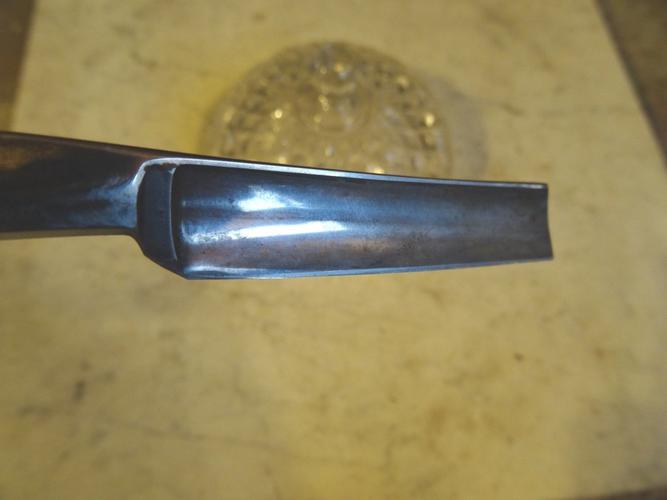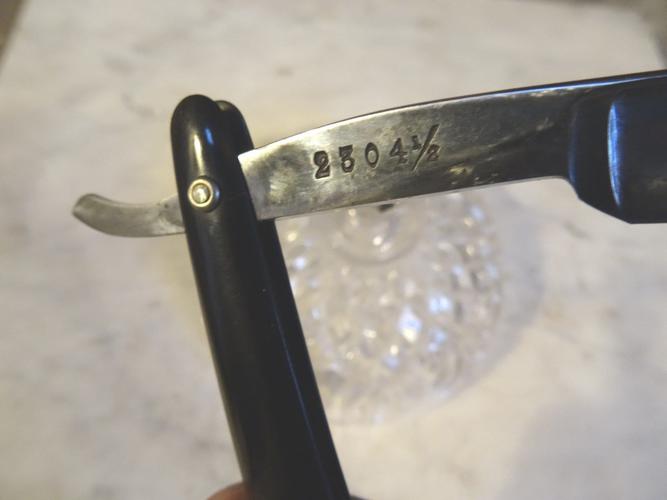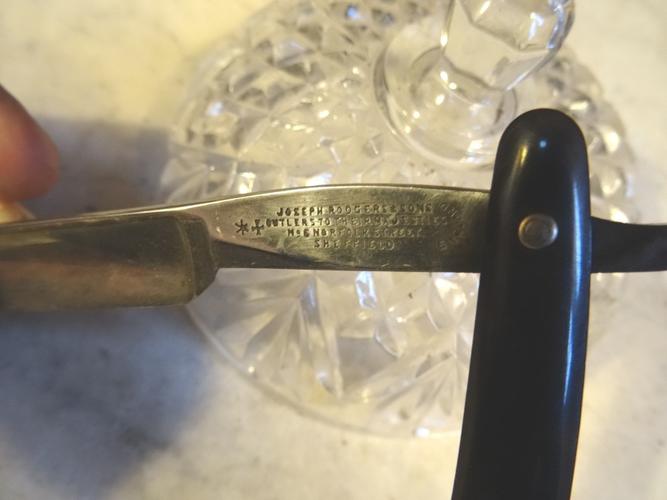Results 1 to 4 of 4
-
02-04-2015, 04:30 AM #1Junior Member

- Join Date
- Feb 2015
- Location
- Chicago, IL
- Posts
- 2
Thanked: 0 Newbie. Looking for W&D, and Joseph Rodgers
Newbie. Looking for W&D, and Joseph Rodgers


 Hi to all. New here. I've been into DE for a while, and want to take the next step to straight razors. My wife bought me a new Thiers-Issard a few years ago, and now I'm hooked. I just bought a Joseph Rodgers on eBay, will post pictures when I get it, that says 2304 1/2 on the tang. I love the history, the beauty, and the lifestyle of the straight razors, but I don't know enough about them. In a nutshell I want a piece of history I can use. I don't know if what I got was a good deal or not, but for $20 I don't care. I also want a Wade & Butcher, but I just don't know what to look for. Any advice on the what to look for in these two brands would appreciated. Thanks to all.
Hi to all. New here. I've been into DE for a while, and want to take the next step to straight razors. My wife bought me a new Thiers-Issard a few years ago, and now I'm hooked. I just bought a Joseph Rodgers on eBay, will post pictures when I get it, that says 2304 1/2 on the tang. I love the history, the beauty, and the lifestyle of the straight razors, but I don't know enough about them. In a nutshell I want a piece of history I can use. I don't know if what I got was a good deal or not, but for $20 I don't care. I also want a Wade & Butcher, but I just don't know what to look for. Any advice on the what to look for in these two brands would appreciated. Thanks to all.
Last edited by jcrickett; 02-04-2015 at 04:54 AM. Reason: Got some picture, need opinions, please.
-
02-04-2015, 05:17 AM #2I used Nakayamas for my house



- Join Date
- Aug 2009
- Location
- Des Moines
- Posts
- 8,664
- Blog Entries
- 1
Thanked: 2591
Welcome to the forum.
When buying razors, IMHO you need to look for the following things in no particular order:
#1 corrosion/rust. You want blades that have little corrosion or rust. Especially important is that the bevels and a little above them are clean. Pitting on the bevels means there might be issues with the steel structure and those may not hone out. Ona heavier grind blade you may be able to get to lean steel but on a hollow ground you may not be lucky. Active rust may be hiding pitting under so you never know what you are getting there.
#2 hone wear. lookd for as little honewear as possible and also for even honewear. Some razors are heavily honed towards the toe and therefore present more honewear on tha spne above. Some razors have uneven grind and thus uneven honewear. This usually is not an issue, but may require experienced honer to hone the blade, so if you want to hone your own blades you may want to stay away from blades with uneven honewear on the spine.
#3. look for signs of cell rot. Cell rot is a result of out-gassing from celluloid scales. Lots of vintage razors are made with celluloid scales. If a blade does not show signs of cell rot you may be safe, but if it does then avoid it.
#4 big chips, cracks. Avoid blades with large chips, and make sure to look for cracks and avoid those blades. Cracks occur very often in the middle of the blade or towards the heel of the blade.
#5. straight scales. Warped scales will cause issues with closing of the razor, so if possible try to avoid those.
I am sure others will add more, for me those are the important ones.Stefan
-
02-04-2015, 05:32 AM #3Junior Member

- Join Date
- Feb 2015
- Location
- Chicago, IL
- Posts
- 2
Thanked: 0
Stefan,
Thank you so much, awesome advice. I will save this, and use this in my future endeavors. Any advice in the history of these two brands. I really want something mid 1800's, or earlier, that I can actually use. BTW, what is your opinion on the one I just bought?
-
02-04-2015, 05:41 AM #4I used Nakayamas for my house



- Join Date
- Aug 2009
- Location
- Des Moines
- Posts
- 8,664
- Blog Entries
- 1
Thanked: 2591


 LinkBack URL
LinkBack URL About LinkBacks
About LinkBacks






 Reply With Quote
Reply With Quote
